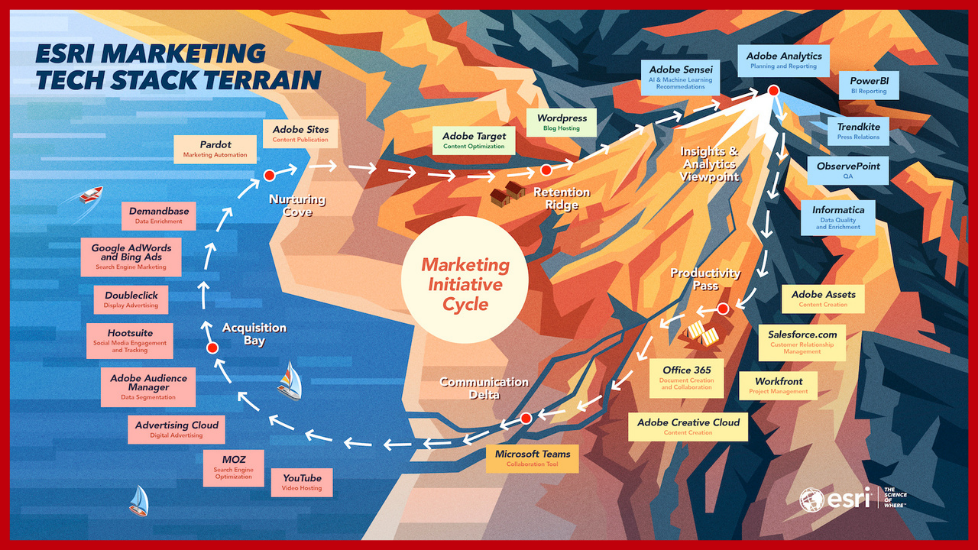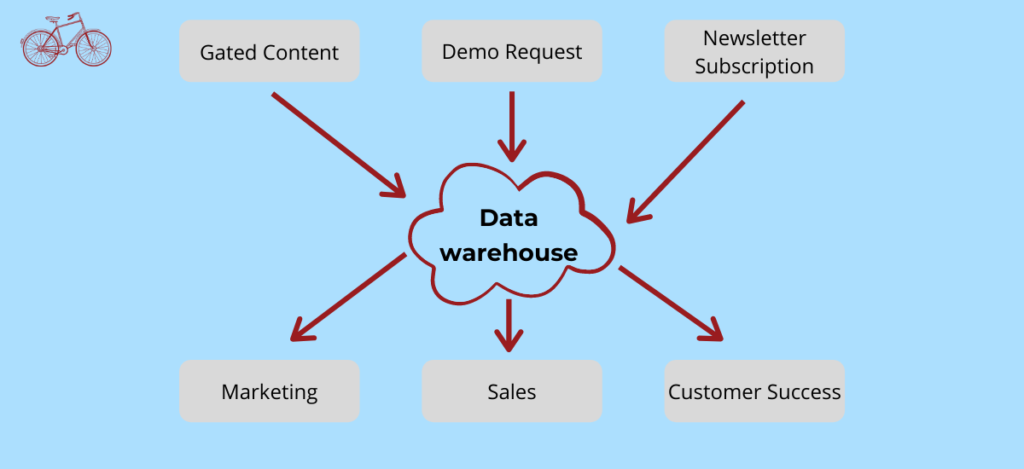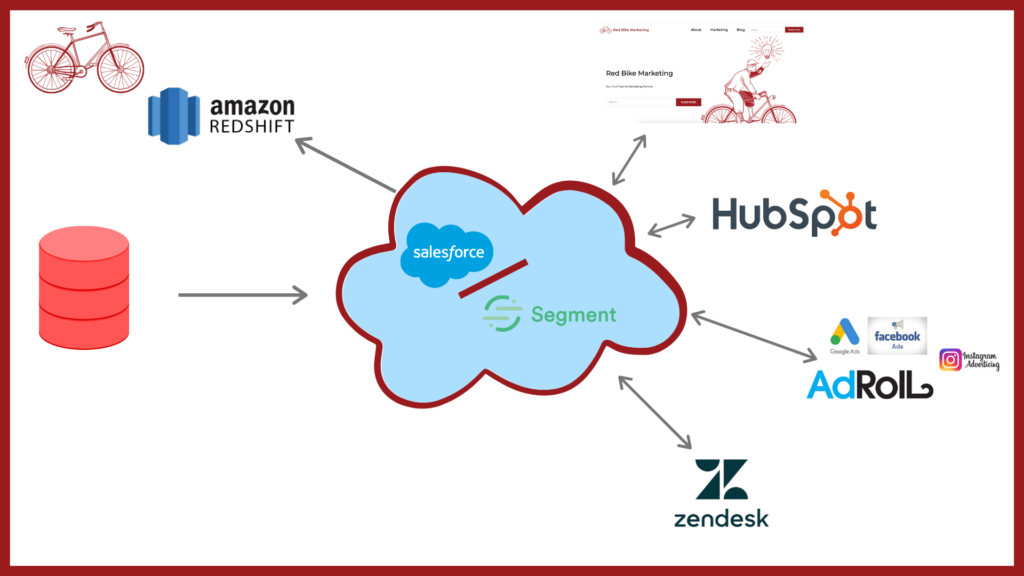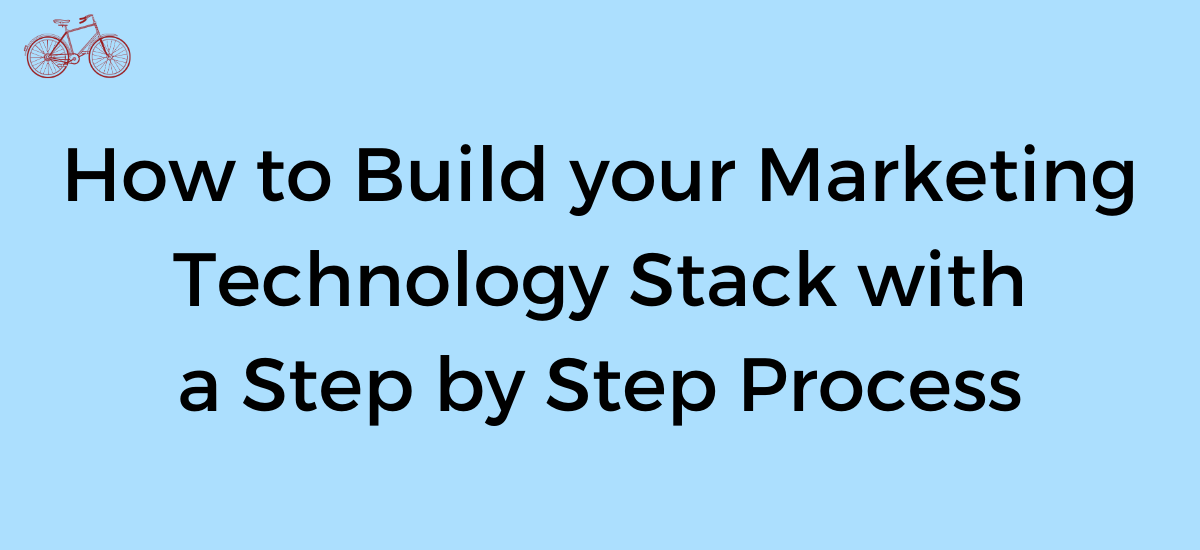The success of your marketing campaigns is likely determined by the set of tools you use to execute them. It’s your marketing tech stack (marketing stack for short).
There isn’t necessarily one tool that is the best. Or, one marketing stack setup that’s the best. But, the combination of tools you use and how you integrate them for your specific use cases does determine if it works for you.
This should not be taken lightly. Especially since there are more tools now than ever before. It’s a bit overwhelming.
That’s why we created a guide to help you build the right marketing stack for your business.
Read on to get an understanding of how to build out your marketing stack with a step by step process for doing so.
What is your Marketing Stack?
Your marketing stack is the collection of marketing tools and infrastructure that allow you to execute your marketing campaigns. Understanding your marketing stack can help you understand what capabilities you have as a marketing team.
Typically, marketing stack ownership is going to live with a marketing operations function. There are two ways you can visualize and document your marketing stack. There is the graphical documentation, which takes the form of the Chief MarTech “stackies”. You would document your marketing stack like the following:

This format lets you understand what tools you have and the role they play in attracting, converting, and retaining customers.
The next way to document your marketing stack is to document how and what data flows where. This helps tell you what data you have available where and when. Which, will dictate segmentation and personalization capabilities.

By having a clear understanding of your marketing stack, you can determine what capabilities you have today and what you might need to improve.
Based on this, we are going to walk through how to do that. If you want to build out your marketing stack and learn how to evaluate tools, read on.
Considerations When Building your Marketing Stack
We’re going to discuss how you can build out your marketing stack. When building out your marketing stack, you’ll think about it with three questions.
- What should you expect of your marketing stack?
- What is your marketing stack foundation?
- How are you going to solve for problems?
Answering these three questions will give us an understanding of how to build out our marketing stack.
What should you expect of your marketing stack?
The first question you should ask yourself is what you expect your marketing stack to do for you.
Simply, what are you trying to accomplish?
While over time, this is likely to be determined on a problem by problem basis, it’s good to understand what your overall, long term marketing strategy is.
Some strategic considerations are:
- Are you sending leads to a sales team?
- Will you coordinate multiple customer facing teams?
- Do you need to go multi-channel?
- How long are your conversion funnels?
- What stages of the conversion funnel will you be covering?
- Do you use personalization or will you incorporate a personalization strategy?
- Do you use segmentation or will you build a segmentation strategy?
Understanding what you should expect of your marketing stack can help guide your long-term strategy.
What is your marketing stack foundation?
The foundation of your marketing stack is what you are going to use as the central hub for your marketing activities.
You will have data coming from multiple sources. Like, your application, marketing forms, sales data, customer facing teams, and possibly many more. You will want to coordinate all this into a single place, outside your data warehouse.
Two options you might consider are a customer relationship management (CRM) system or a customer data platform (CDP).
The point isn’t which of these two are better, because that depends on the situation. But, it’s good to decide on what the central driver of your marketing stack is going to be. It should ultimately look like the following:

How are you going to solve for problems?
The last consideration to build out your marketing stack is to have a process for solving problems. Ultimately, the problems your marketing team is facing in executing marketing campaigns is going to determine how you end up scaling your marketing stack.
The entire next section of this is a framework for evaluating solutions and giving you a step by step process to build out your marketing stack.
Download our marketing stack evaluation template here.
After considering the questions and points above, it’s time to implement a process for evaluating tools and solutions for your marketing stack.
Keep reading to get our step by step process for evaluating tools as you build your marketing stack.
How to Build your Marketing Stack
In order to actually begin to build out a marketing stack and make your marketing team more impactful, you have to have a process. Without a process, you end up with a “Frankenstack”. Just a disconnected, redundant, and un-strategic mess of tools that don’t actually solve your marketing team’s needs.
To avoid this scenario, we have developed a systematic and scalable process to build your marketing stack.
Download our marketing stack evaluation template here.
Always Begin with a Problem
The first thing you do is you begin with a problem. This can either be the Marketing Operations team finding problems, or the marketing team coming to the Marketing Operations team with a problem.
This is the foundation to effectively building out your stack. Solve for problems today with a guiding light for the future. The guiding light ensures you are strategic and choose a long-term solution. Solving for problems means you don’t waste time and resources with nice to haves that end up going underutilized.
Solution Evaluation Process
The following is your step by step process for accomplishing this.
Step 1: Identify the teams need
The first step is to identify the need. What team needs what problem solved?
Step 2: Value the impact of the solution
Valuing the impact of the solution will tell you how to prioritize working on the solution. This also tells you how to measure its success later on.
This step determines if you will solve the problem or not. And, when you will solve it in relation to all the other work you have.
Step 3: Solution evaluation
Once we understand the problem and we have decided to solve it, it’s time to evaluate a solution.
The solution might be bringing in a new tool, building with our existing tool set, or having an engineering team build the solution.
We should consider each of these three options in a build vs. buy assessment. Our principle here is to always keep our marketing stack as lean and simple as possible. But, ensuring we provide our marketing team with the capabilities they need to execute great marketing campaigns.
In the bottom section, there is a detailed list of evaluation criteria that can be used during this step.
Download our marketing stack evaluation template here.
Step 4: Make selection
Once we have been through our evaluation, you make the selection for the solution.
Step 5: Setup and integrate
Solution setup and integration is a critical step. We want to ensure the solution we come up with works and is effective. Also, we have to ensure that it is effectively integrated with the rest of our marketing tech stack.
Step 6: Establish ongoing support
As our solution is up and running, we want to ensure our teams have ongoing support. If something breaks, some additional functionality is needed, or new team members need training, we want a process for doing this.
Remember, we want these solutions to be implemented for the long-term. In order to maintain them, we have to have ongoing support.
Step 7: Train key users
With any solution, there are going to be power users and average users. We want to be sure we have power users trained on our solutions throughout the organization. This creates a decentralized, self-service environment.
We want to empower our teams throughout the organization to effectively do their jobs with the solutions we implement.
Step 8: Increase adoption and use
If what we setup can be utilized by more than the initial team, we want to increase the adoption and use of the solution. This helps us avoid teams wanting to switch after we build an effective solution. Also, it ensures that our solutions are not underutilized.
With this process, you can ensure you strategically build out your marketing stack and have systems in place effectively utilize all the capabilities you build.
Marketing Stack Evaluation Criteria
As you work through step three and evaluate solution options, you can utilize the following criteria.
We have put these criteria into a handy downloadable template here.
Marketing need
The marketing need should be a specific need or problem you are solving for. We have mentioned this multiple times, because the importance of this when building your marketing stack cannot be over stated.
Necessary functionality
In determining the solution, before you evaluate a tool or building the solution, you should document the necessary functionality. This should be done independent of the solution, because you want to mold the solution to your problem. Not your problem to the solutions capabilities.
Solving for multiple needs
When solving a problem, is there a situation where you can “kill two birds with one stone”?
Solving for multiple needs means the ROI of the solution can be more impactful to your business. Also, it helps with solution adoption within your business.
Impacted teams
Documenting the teams within your organization that can be impacted by this solution is a good practice. This can be positive or negative impact.
Potential ROI
Try and calculate the ROI of the solution. This could be done in:
- Efficiency gains
- Revenue generation
- Cost savings
Putting the solution in one of these three buckets helps determine its impact on the business.
Support needed
What support is the solution going to need. This can be part of the setup and implementation or ongoing. Understanding the need helps plan the overall impact.
Build vs. Buy
This is a good debate to have. In the build vs. buy scenario, you basically have three options:
- Build with a home-grown solution with engineers
- Build with our existing tools
- Buy a third-party solution
The answer to this might surprise you. And, it helps keep your marketing stack lean and simple.
Cost of the tool
Determine the overall cost of the tool. Both in the short term and the long term.
Long term is important, because when growth is involved, costs can escalate rapidly.
Cost of onboarding
How much time and resources are needed to onboard the solution. Understanding this can help avoid any surprises.
Solution fit to problem
How well does the solution ultimately solve the problem? If the problem is complex, there may not be any perfect solutions. In that case, a “good enough” approach might be necessary.
Integration compatibility
When thinking about our solution, if it ends up being a new third-party tool, we need to consider how easily and how well it integrates into our current marketing stack.
Integration with other tools
As we grow and scale our marketing stack, we need to choose tools and solutions that integrate with others easily. This is part of thinking long term and having a long-term strategy for your marketing stack.
Tool support
How good is the tools support? This might determine success or failure of the solution within your organization.
Intuitiveness
How intuitive and easy is the solution to use? Depending on who will use the solution day to day, this should satisfy them. It will ultimately affect adoption within your organization.
Company information
If choosing a third-party tool, documenting some information about the company is good. This can help determine how many resources they have to improve the tool. Also, it can give a sense of how robust the company is for long term health.
Tools target audience
For a third-party tool, who is the tools target audience? This is something to note, because if you are a B2B company and the tool is primarily for B2C companies, there is likely to be a feature mis-match. You want to make sure you fit their audience so they ultimately build features that work for you.
These criteria, while extensive, should provide you with the ability to make informed and strategic decisions. As you do this more and more, the checklist will be easier and a lot can be done in the background.
Building a marketing stack that enables your marketing team to execute creative and effective campaigns is not easy. Too often, companies end up with a marketing stack that is uncoordinated, underutilized, contains redundant tools, and costs too much money.
With this guide, we hope you can work towards a more effective marketing tech stack.

